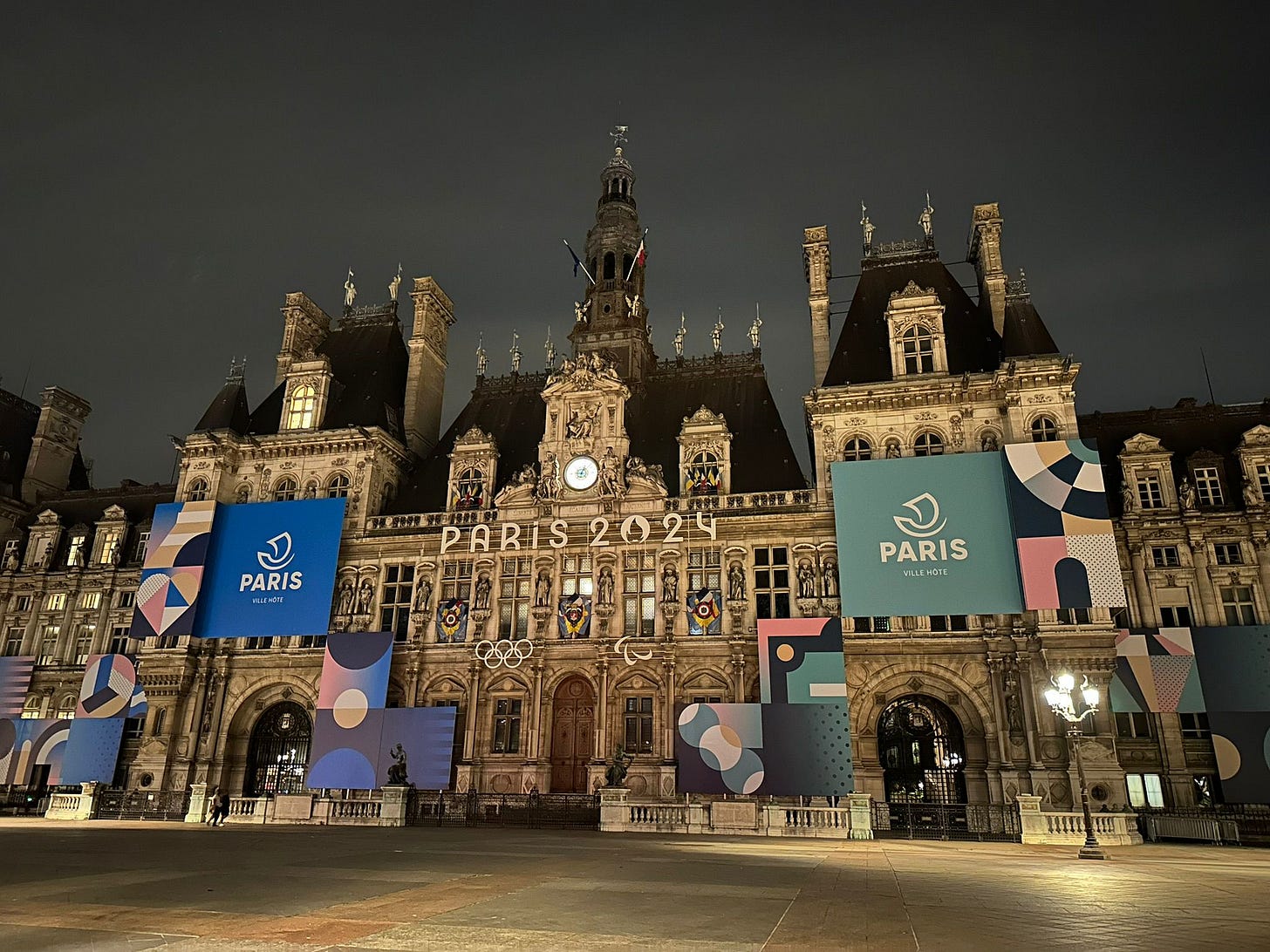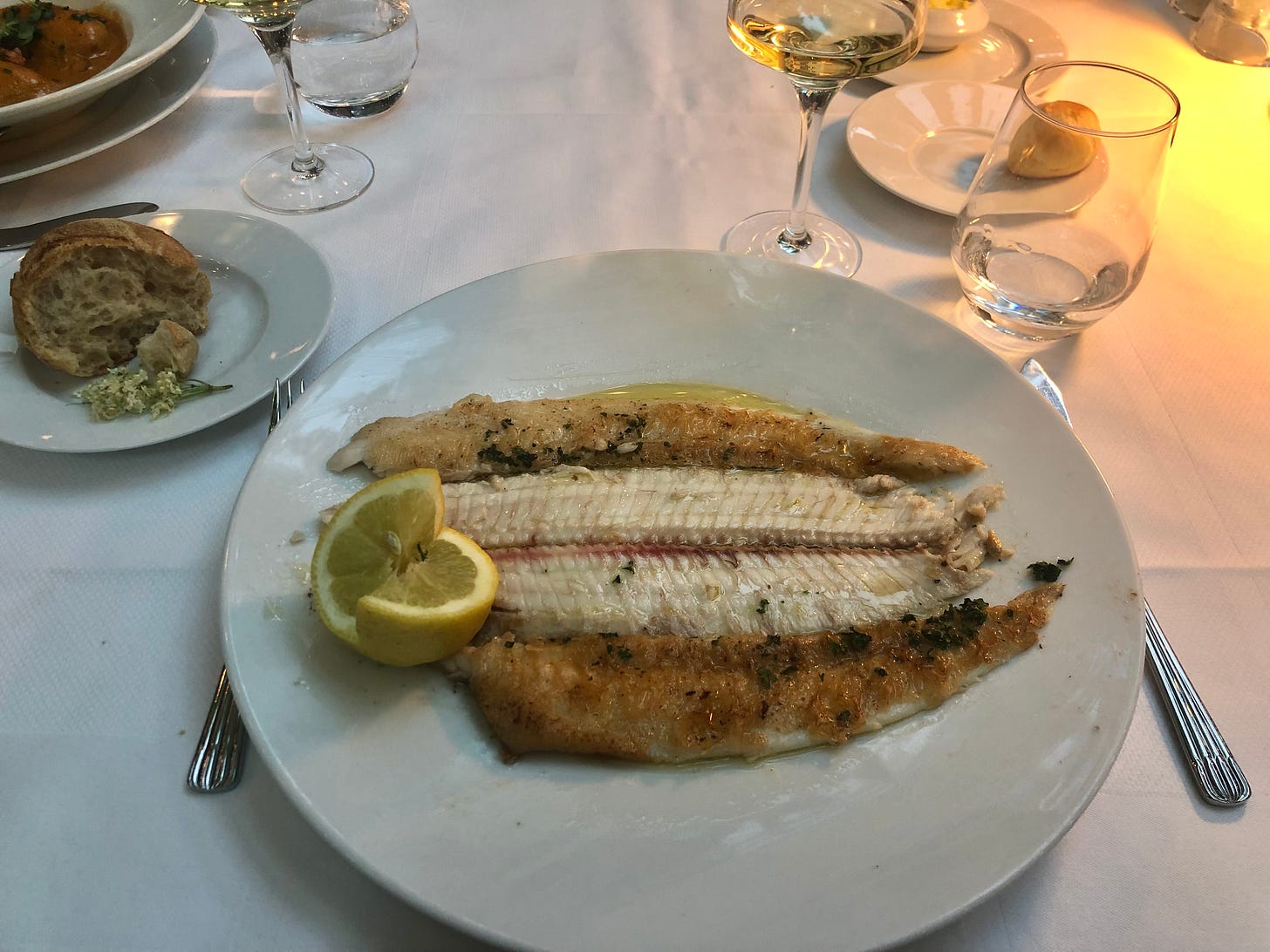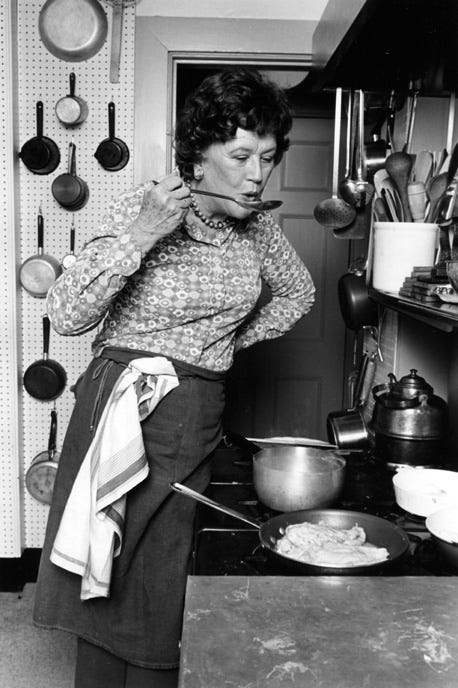For the past ten days I have been in France, visiting family and generally doing a lot of eating. Last week I ate my way through Paris – rich decadent meals that did not shy away from butter. There was côte de bœuf, there was duck, there was fresh asparagus, escargots, some very stinky Tomme from Auvergne, and oddly also kangaroo (that might be a story for another newsletter).
The last time I was in Paris was for a conference about the nature of taste with Université Paris 8 back in 2018 on Île Saint-Louis (honestly, a pretty wonderful week). I’m happy to report that six years later Paris looks pretty much the same. The light across the Seine in the late afternoon is still magical. The food is excellent. And the people have all kinds of strong opinions. Of course, there are some changes. Notre-Dame is still under construction. And the Hôtel de Ville is now plastered in posters and billboards for the upcoming Olympics (the light pink and blue hues that have been chosen for all the Olympic logos and visuals really feel more evocative of a breast cancer charity to me than the world’s greatest sporting event, but what do I know). Also I have come to the conclusion that the Pompidou Center is just ugly (though the views from the roof are spectacular, as is the new Brancusi show). One week in Paris and I’ve got opinions too!
In between forming strong assessments of design and architecture (two subjects I frankly know little about) I was lucky enough to enjoy a delicious meal at La Closerie des Lilas with my family. It’s an old brasserie in the 6e arrondissement on boulevard du Montparnasse that used to be frequented by Hemingway, Fitzgerald, Picasso, Sartre etc. (you get the type). My father and I indulged in our ritualistic oyster binge – this time oysters from Bretagne, deep shells, brimming with sea water, almost as big as my hand (and maybe the best oysters I’ve ever eaten?) For the main course I had to go for the classic, the iconic, the old school – Sole Meunière.
Lightly breaded sole with a sauce of capers and butter – it is simple and elegant. When it is done well it achieves a kind of perfection. All of my attempts at Sole Meunière at home have typically ended up with the filet in pieces, burnt slivers of fish sticking to the pan as I desperately try to salvage the buttery caper mess (in my defense, it always tastes good, it just does not look good).
When the fish arrived at La Closerie des Lilas, it was presented to me and then returned tableside by the waiter who proceeded to debone the fish with military precision. He removed les arêtes (the edges of the fish) with gentle flicks of the knife. The personalized flair with which he scraped the knife outwards demonstrated a motion that has been practiced many times before. As he prepared the fish – I couldn’t stop thinking about Julia Child. If you are familiar with Julia, then you know that Sole Meunière is the dish that changed her life.
Julia Child was born in Pasadena, California in 1912 to a staunchly Republican father and a mother whose entire culinary repertoire consisted of baking powder biscuits and Welsh Rarebit. Julia was not born a foodie. But by the 1960’s she was a culinary star with her own TV show, the author of the seminal cookbook Mastering The Art of French Cooking, and the official/unofficial advisor to Americans on all things French cooking.
Her introduction to French food began in 1948, when she and her husband Paul moved to France. Paul was working for the United States Information Service, with the goal of spreading American culture abroad post- World War II (his work all feels a bit Cold War/covert CIA coded to me). After sailing across the Atlantic, the Childs docked in Le Havre and stopped in Rouen for lunch. They visited a restaurant called La Couronne, which was built in 1345 (!!) and still exists to this day. Julia recalled years later that when the Dover Sole they ordered arrived at the table,
“It arrived whole: a large, flat Dover sole that was perfectly browned in a sputtering butter sauce with a sprinkling of chopped parsley on top. The waiter carefully placed the platter in front of us, stepped back, and said: ‘Bon appétit!’ I closed my eyes and inhaled the rising perfume. Then I lifted a forkful of fish to my mouth, took a bite and chewed slowly. The flesh of the sole was delicate, with a light but distinct taste of the ocean that blended marvelously with the brown butter. I chewed slowly and swallowed. It was a morsel of perfection.”
Julia would go on to experience a sort of personal awakening and journey of self-discovery, as she studied classical French cuisine at Le Cordon Bleu and eventually became a culinary star. Others have mimicked her journey in their own ways; see Julie Powell, who forty-two years later methodically worked her way through Child’s behemoth 524 recipe-tome for her blog Julie/Julia Project and ultimately inspired the movie Julie & Julia (Meryl Streep as Julia Child is chef’s kiss).
But what was so special about Julia’s culinary tutelage was how she shared the confidence she had gained learning to cook French cuisine, with her readers and viewers. In an episode of The French Chef, in which Julia explains how to make caramel sauce, she dispels apprehension towards such a delicate recipe, by exclaiming, “This is one of those awful American syndromes, fear of failure…you’ve got to have what the French call “je m’en foutisement’ or, ‘I don’t care what happens!’ I’m gunna learn! I shall overcome! That sort of women’s liberation… everything like that.”
Liberation and grand revelations have not yet occurred in my present culinary journey around France. But there is always time. For now, I’ll just enjoy the food.
Bon appétit!
Edible History is a reader supported newsletter. To support my work and to gain access to the full archive of posts (each month paid subscribers receive additional edible histories and recipes in their inbox) consider upgrading to become a paid subscriber.









I love Sole Meuniere. I use Ina Garten's recipe when I make it and it's delicious every time.
Very interesting article.